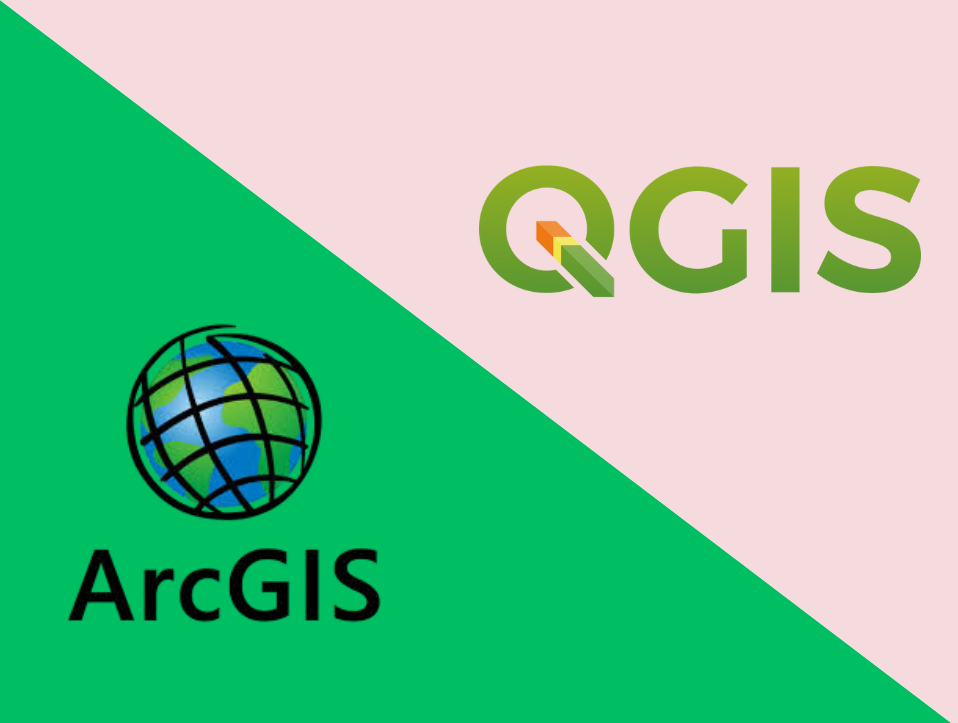In the world of Geographic Information Systems (GIS), two software platforms consistently stand out: ESRI’s ArcGIS and the open-source QGIS. Whether you’re an urban planner, environmental researcher, government analyst, or spatial data scientist, selecting the right GIS tool is crucial to your work’s accuracy, efficiency, and scalability.
Both ArcGIS and QGIS enable professionals to collect, analyze, visualize, and interpret geospatial data. However, they differ significantly in terms of licensing, functionality, customization, and user experience. In this blog, we explore these differences in detail and help you decide which platform best fits your needs.
What is GIS Software
GIS software provides the tools to map spatial data and uncover patterns, trends, and relationships. These systems are vital in industries such as real estate, utilities, transportation, urban planning, public safety, and environmental monitoring. With the demand for spatial intelligence growing, choosing the right platform becomes even more critical.
ArcGIS, developed by ESRI, is a commercial solution with enterprise-grade tools and a wide user base across governments and multinational organizations. QGIS, on the other hand, is a community-driven, open-source alternative that’s gaining rapid traction for its flexibility and cost-effectiveness.
ArcGIS vs QGIS in 2025 | Which One Should You Use?
Licensing and Cost
ArcGIS:
ArcGIS operates on a paid subscription model. Its licenses can range from a few hundred to several thousand dollars per user annually, depending on the tools and extensions required. These costs make ArcGIS a considerable investment, particularly for smaller organizations or independent professionals.
QGIS:
In contrast, QGIS is completely free to use under the GNU General Public License. Whether you’re working individually, in a nonprofit, or at a startup, QGIS provides powerful capabilities without the financial commitment. This affordability makes it particularly attractive to educational institutions and users in developing regions.
User Interface and Ease of Use
ArcGIS:
ArcGIS Pro features a modern ribbon-based interface, which is familiar to users of Microsoft Office applications. Its design is polished and intuitive, though some advanced features can require training to master. ESRI offers structured learning paths and certifications, making it easier to onboard teams.
QGIS:
QGIS has a more traditional interface that may feel less refined initially, but it is highly customizable. Users can modify panels, toolbars, and layouts to suit their workflow. For those new to GIS, QGIS has a learning curve, but it’s supported by an extensive global community, online tutorials, and open documentation.
Functionality and Extensions
ArcGIS:
One of ArcGIS’s biggest strengths is its comprehensive suite of advanced tools. Extensions like Spatial Analyst, Network Analyst, and 3D Analyst empower users to conduct sophisticated spatial analysis, create detailed surface models, and analyze transportation networks. These tools are tightly integrated within the ESRI ecosystem, including ArcGIS Online and ArcGIS Enterprise.
QGIS:
QGIS, while not as feature-rich out of the box, compensates through its robust plugin architecture. Thousands of user-developed plugins extend QGIS’s functionality across hydrology, terrain modeling, data visualization, temporal data analysis, and more. Plugins such as Time Manager and QGIS2Web add capabilities that rival many commercial offerings.
Data Compatibility and Format Support
ArcGIS:
Both platforms support common GIS file formats, including shapefiles, GeoTIFFs, KML, and GeoJSON. ArcGIS excels with proprietary formats like File Geodatabases (.gdb) and integrates deeply with ESRI’s cloud and server products.
QGIS:
QGIS, through GDAL and OGR libraries, supports a wider range of open formats and databases. It works seamlessly with PostGIS and SpatiaLite, making it an ideal tool for projects emphasizing open data standards and interoperability.
Customization and Scripting
ArcGIS:
For automation and advanced workflows, both platforms support Python scripting. ArcGIS uses ArcPy, offering deep integration with ESRI tools but limited to licensed environments. QGIS utilizes PyQGIS, which is more flexible and allows developers to build custom plugins, process models, and scripts without licensing restrictions.
QGIS:
QGIS is generally preferred by developers and researchers looking to extend functionality or integrate GIS capabilities into larger applications.
Cloud and Web GIS Integration
ArcGIS:
ArcGIS provides a robust cloud offering through ArcGIS Online. Users can publish web maps, create interactive dashboards, and develop story maps directly within the platform. These features are valuable for public engagement, reporting, and collaborative projects.
QGIS:
QGIS lacks a native cloud platform but supports integration with open-source web map servers like GeoServer and MapServer. Additionally, tools like QGIS Cloud and plugins like qgis2web allow users to export web maps in Leaflet or OpenLayers formats.
Performance and Stability
ArcGIS:
ArcGIS Pro is designed for high-end systems and performs best on machines with ample RAM and dedicated graphics support. It is stable, enterprise-ready, and suited for large-scale, data-intensive projects.
QGIS:
QGIS is more lightweight and efficient on modest hardware. It performs well in field settings or where computing resources are limited. While occasional bugs can arise in plugin-heavy environments, frequent updates and an active development community ensure consistent improvements.
Support, Training, and Community
ArcGIS:
ESRI provides official support, extensive training resources, and a professional certification program. Its global conferences and user groups facilitate knowledge sharing and networking within the GIS industry.
QGIS:
QGIS has an active and growing global community. Users contribute to development, documentation, and support forums. While there’s no official customer service, the breadth of free learning materials and peer support makes QGIS accessible and reliable for most use cases.
Which One Should You Choose?
- If you’re managing enterprise-level projects, require official support, and can invest in licenses, ArcGIS is a powerful and dependable option.
- If you’re a researcher, educator, or working with limited resources, QGIS provides flexibility, freedom, and strong capabilities without cost barriers.
In many cases, professionals use both platforms. QGIS can handle initial data preparation and exploration, while ArcGIS is used for final analysis and presentation within an enterprise environment.
Conclusion
ArcGIS and QGIS are both exceptional tools in the GIS domain. Each has its strengths, and the right choice will depend on your specific objectives.
ArcGIS brings commercial robustness and enterprise integration. QGIS offers open-source adaptability and an expansive plugin ecosystem. By understanding the differences, you can select the platform that aligns best with your goals, budget, and workflow.
Whether you’re building smart cities, managing natural resources, or conducting academic research, the GIS tool you choose will play a central role in how effectively you turn spatial data into strategic insights.


One response
[…] Geo Navigators uses tools or software like GIS software (ArcGIS, QGIS), remote sensing platforms (Sentinel-2, Landsat), and drone technologies for high-resolution […]